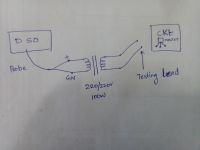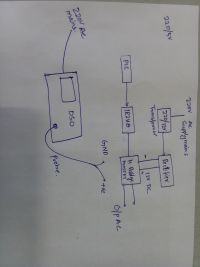Akshaydpal
Member level 1

HI ,
i have DSO TBS2072b from tektronics (ground is not isolated )
will the DSO will get damage if i check mosfet oputput without using isolated probe (using normal probe).??
Actually i am buying this oscilloscope so during demo the marketing team told me about this so i am confused coz i never herd of such things before . Or is it just just there marketing trick to sell me an isolated probe as well?
i have DSO TBS2072b from tektronics (ground is not isolated )
will the DSO will get damage if i check mosfet oputput without using isolated probe (using normal probe).??
Actually i am buying this oscilloscope so during demo the marketing team told me about this so i am confused coz i never herd of such things before . Or is it just just there marketing trick to sell me an isolated probe as well?
Last edited by a moderator:





